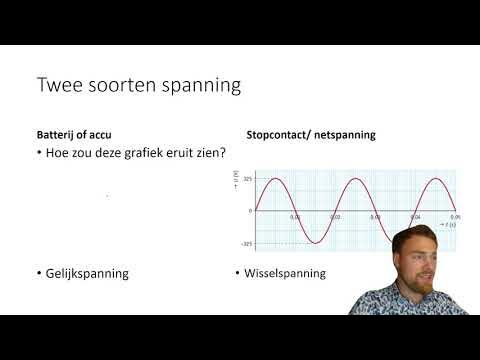KONVERSI ENERGI - ENERGI TERBARUKAN (VIDEO 1)
Summary
TLDRThis lecture discusses the conversion of ocean current energy into electricity. It is divided into three sections: the first covers the basics of Ocean Current Power Generation (OCG) systems, explaining how turbines convert kinetic energy into mechanical energy, which is then transformed into electricity by a generator. The second section focuses on the horizontal axis turbine, which is more efficient and stable than the vertical axis turbine. The third section introduces the calculation of turbine power output and showcases two examples: a 10-meter horizontal turbine producing 2 megawatts, sufficient for 2000 homes, and the Atlantis AR500, a 500-kilowatt turbine capable of powering 500 homes.
Takeaways
- 🌊 The lecture discusses the conversion of ocean current energy into electricity.
- 📚 The material is divided into three sections: electric power generation from ocean current, the PLTA generator, and energy estimation of ocean current turbines.
- 🔧 The basic configuration of an Ocean Current Power Generation (OCPG) system includes a turbine, gearbox, and generator.
- 💡 The turbine converts the kinetic energy from ocean currents into mechanical energy, which is then converted into electrical energy by the generator.
- ⚙️ The gearbox is used to increase the slow speed of the turbine to a higher speed required by the generator to produce electricity.
- 🏄♂️ Two popular types of turbines are discussed: horizontal axis turbines and vertical axis turbines.
- 🌟 The horizontal axis turbine is the most commonly used due to its higher efficiency and more stable power output compared to the vertical axis turbine.
- 📈 The lecture focuses on horizontal axis turbines, which are suitable for small-scale applications.
- 🚫 Vertical axis turbines are not suitable for large-scale applications or megawatt-level power generation.
- 🏡 The video showcases the Orbital Marine Power from Scotland, featuring a 10-meter horizontal axis turbine with a 2-megawatt output, capable of powering approximately 2000 homes.
- 🌐 Another example is the Atlantis AR500, installed in the Naruto Strait, Japan, with a 0.5-megawatt output, sufficient to power around 500 homes.
Q & A
What is the main topic of the lecture?
-The lecture discusses the conversion of energy from ocean currents into electrical energy.
How is the lecture structured?
-The lecture is divided into three main sections: ocean current power plants, hydroelectric generators, and estimates of ocean current turbine energy.
What are ocean current power plants?
-Ocean current power plants are facilities that harness energy from ocean currents or the movement of seawater to generate electricity.
What are the main components of a hydroelectric power plant?
-The main components include a turbine, a gearbox, and a generator.
What is the function of the turbine in an ocean current power plant?
-The turbine converts the kinetic energy from ocean currents into mechanical energy.
What types of turbines are commonly used in ocean current power plants?
-The two most popular types are horizontal axis turbines and vertical axis turbines.
Why are horizontal axis turbines preferred over vertical axis turbines?
-Horizontal axis turbines are preferred because they have better efficiency and more stable power output compared to vertical axis turbines.
What is the significance of the gearbox in the system?
-The gearbox increases the turbine's low rotational speed to a higher speed required by the generator to produce electricity.
What is the output capacity of the Orbital Marine Power turbine mentioned in the lecture?
-The Orbital Marine Power turbine has a length of 10 meters and an output capacity of 2 megawatts.
How many homes can the 2 megawatt output power?
-The 2 megawatt output can supply electricity to approximately 2000 homes if each home consumes 1000 watts.
Outlines

Cette section est réservée aux utilisateurs payants. Améliorez votre compte pour accéder à cette section.
Améliorer maintenantMindmap

Cette section est réservée aux utilisateurs payants. Améliorez votre compte pour accéder à cette section.
Améliorer maintenantKeywords

Cette section est réservée aux utilisateurs payants. Améliorez votre compte pour accéder à cette section.
Améliorer maintenantHighlights

Cette section est réservée aux utilisateurs payants. Améliorez votre compte pour accéder à cette section.
Améliorer maintenantTranscripts

Cette section est réservée aux utilisateurs payants. Améliorez votre compte pour accéder à cette section.
Améliorer maintenantVoir Plus de Vidéos Connexes
5.0 / 5 (0 votes)






